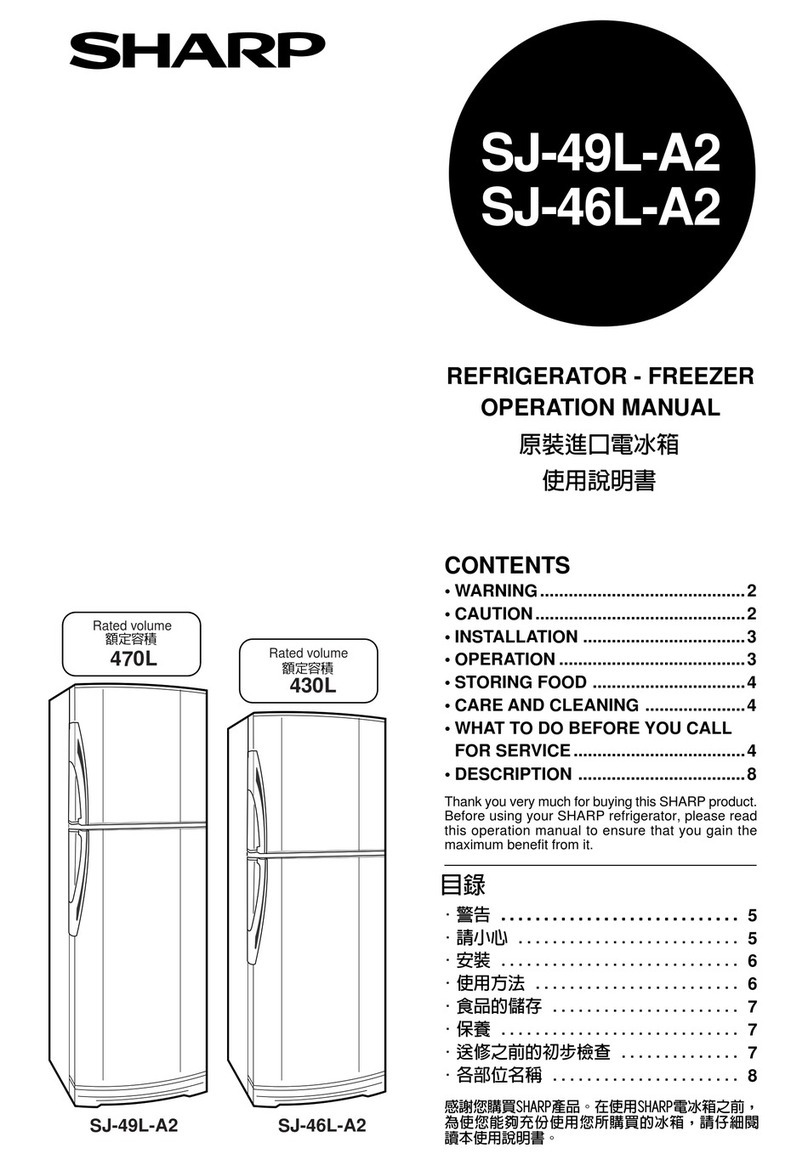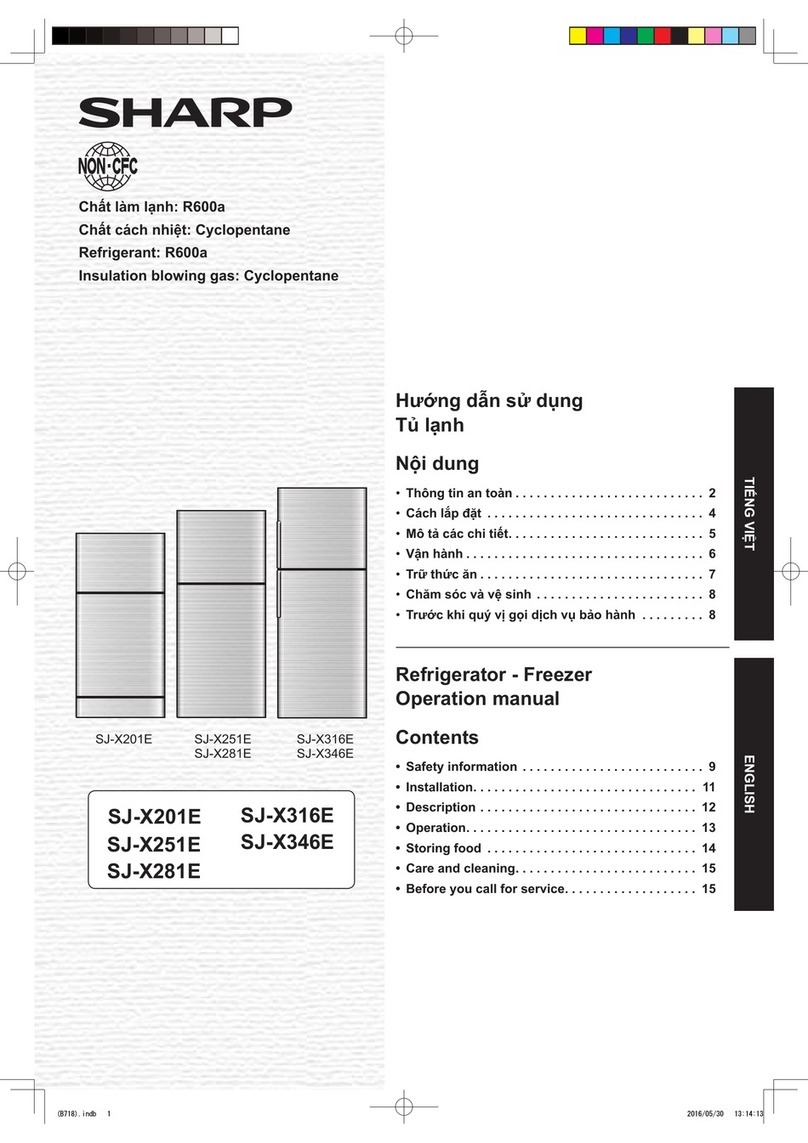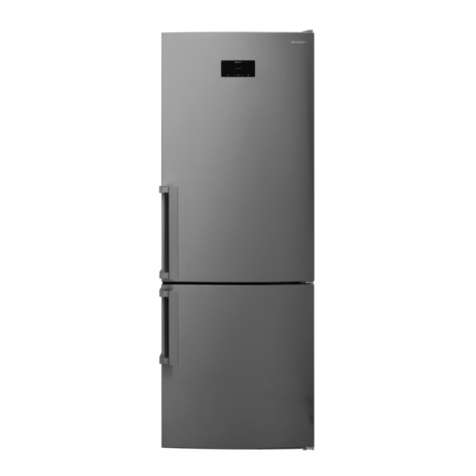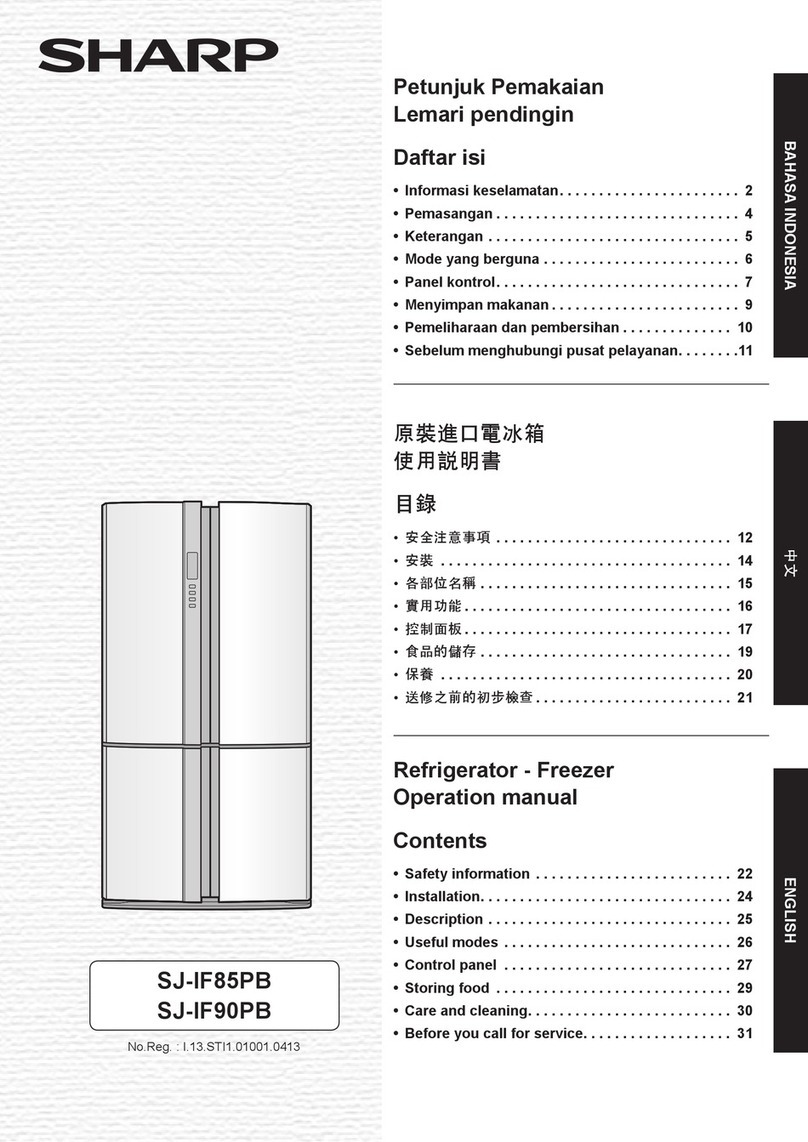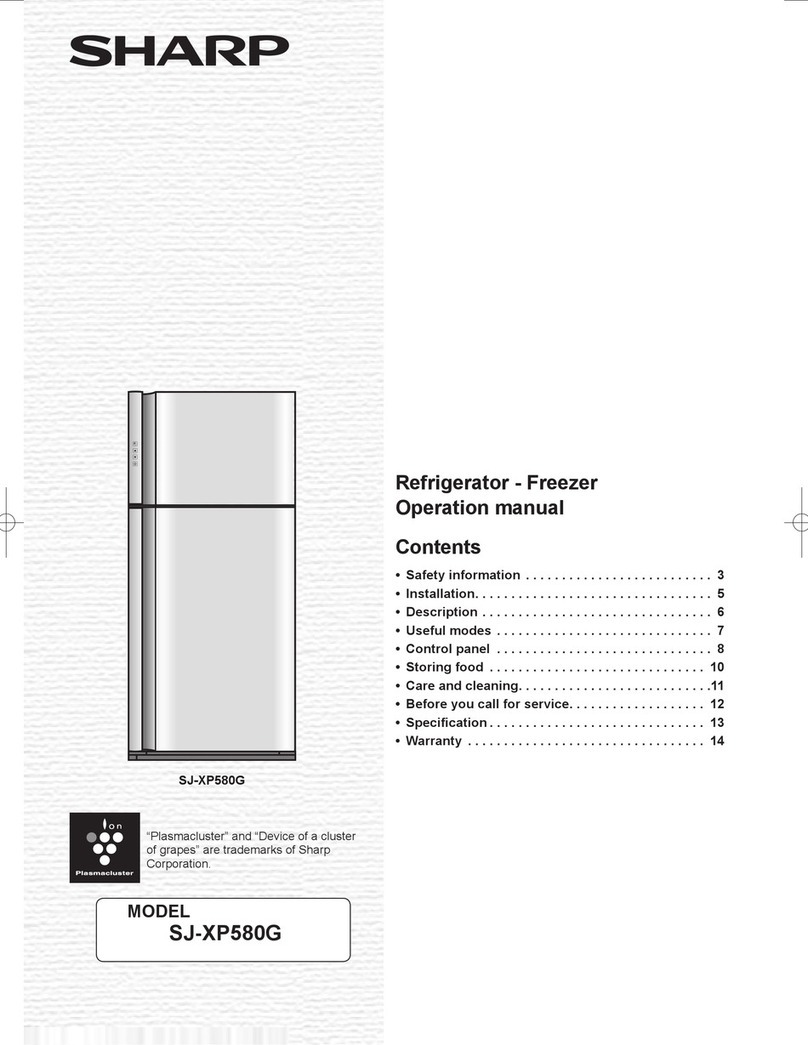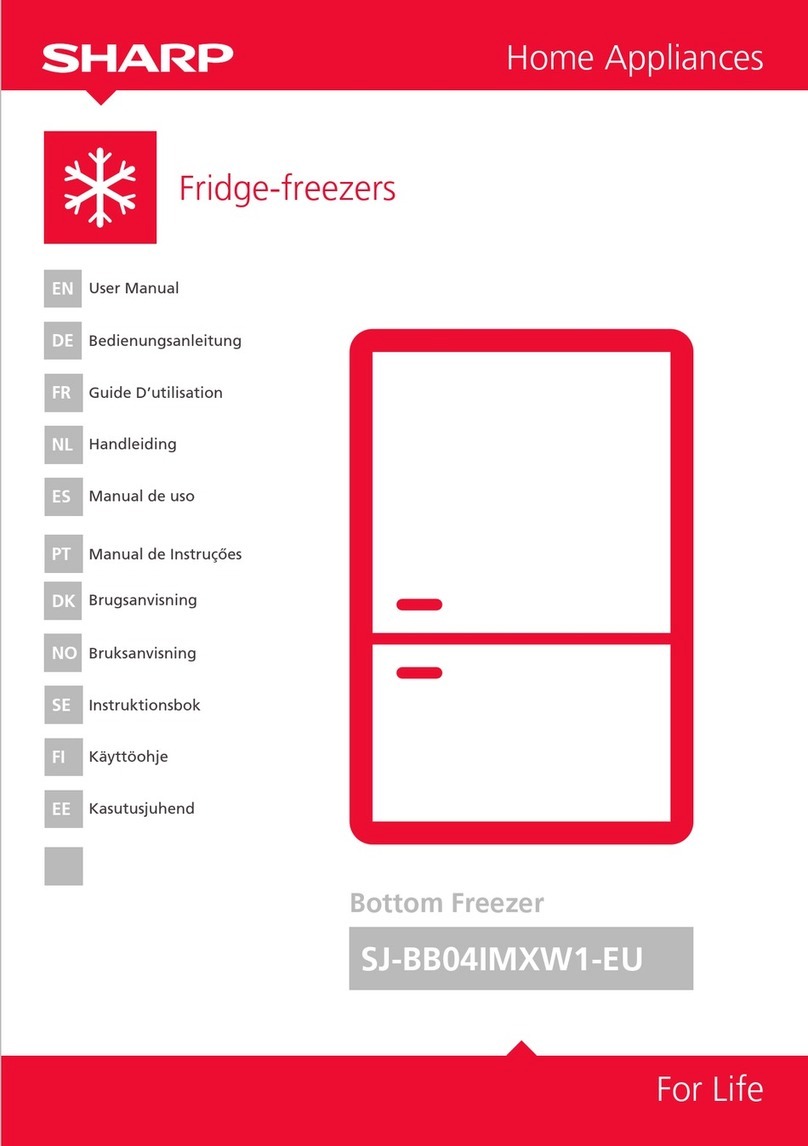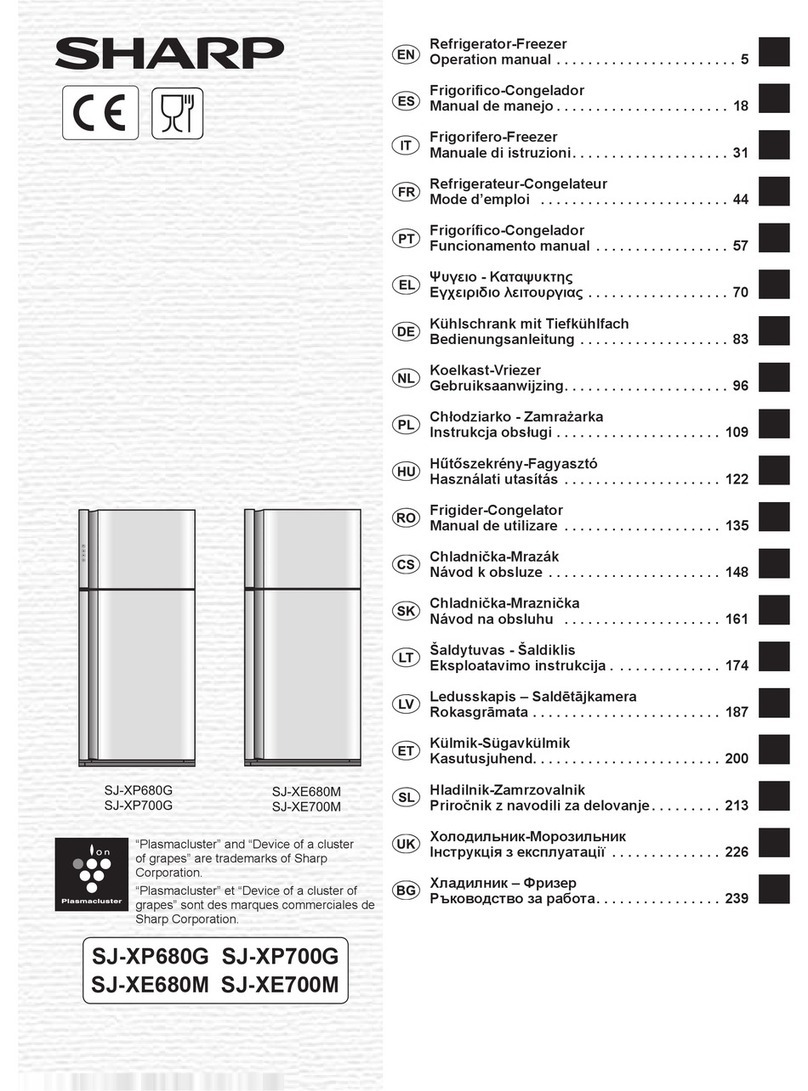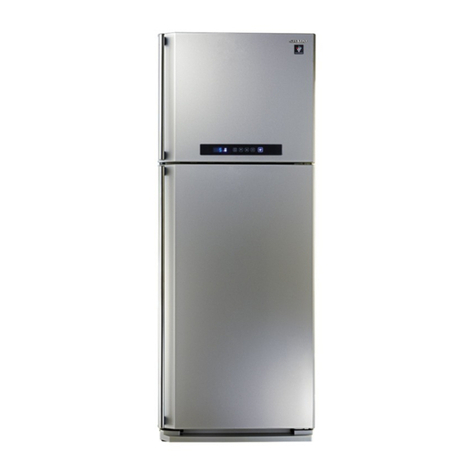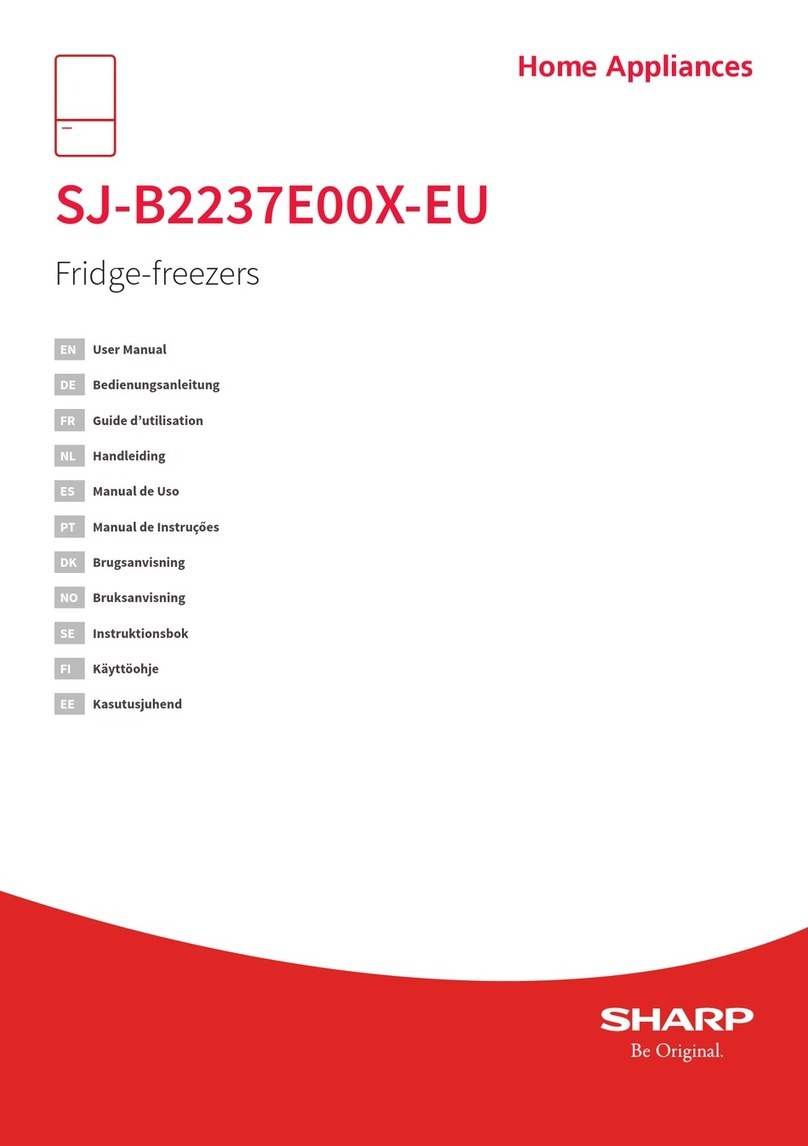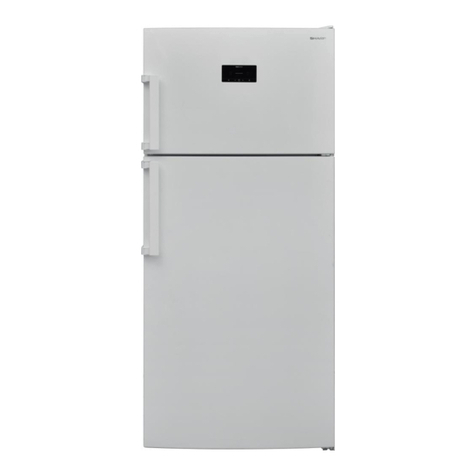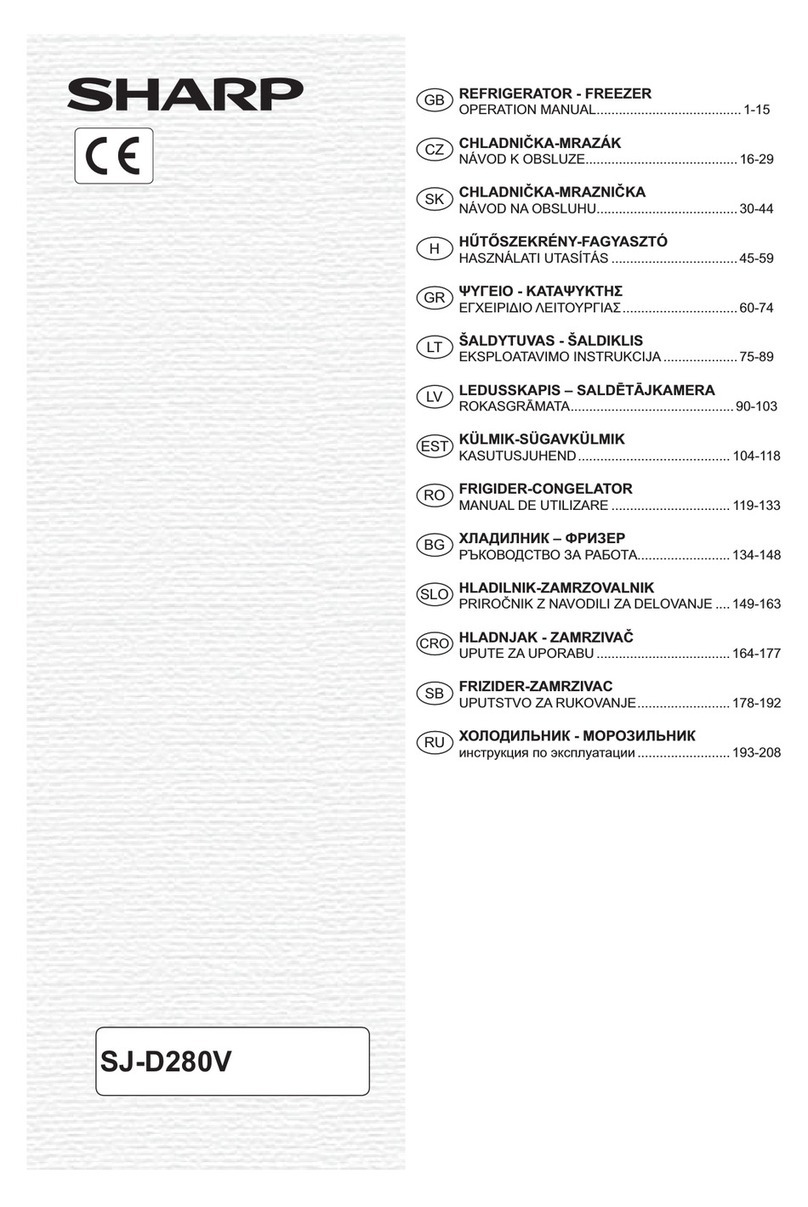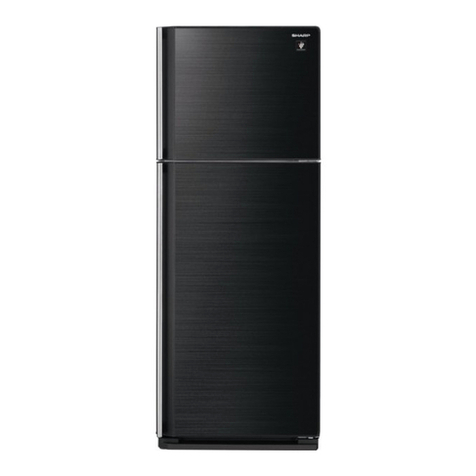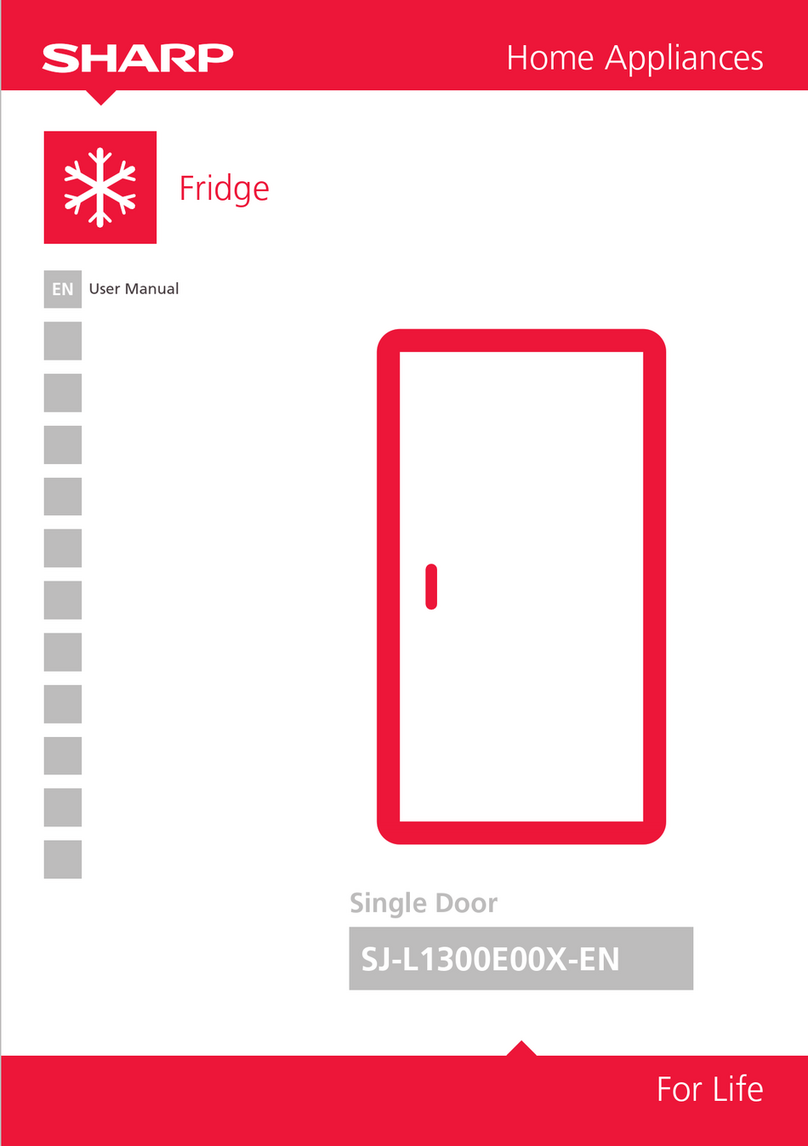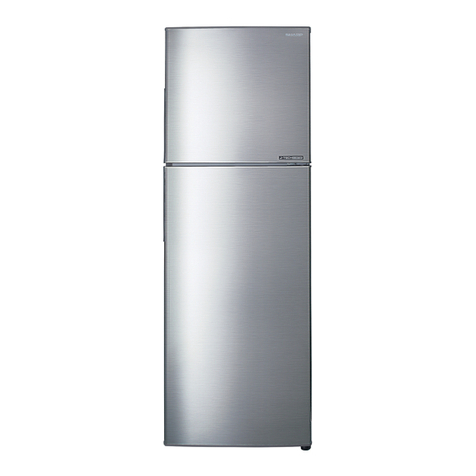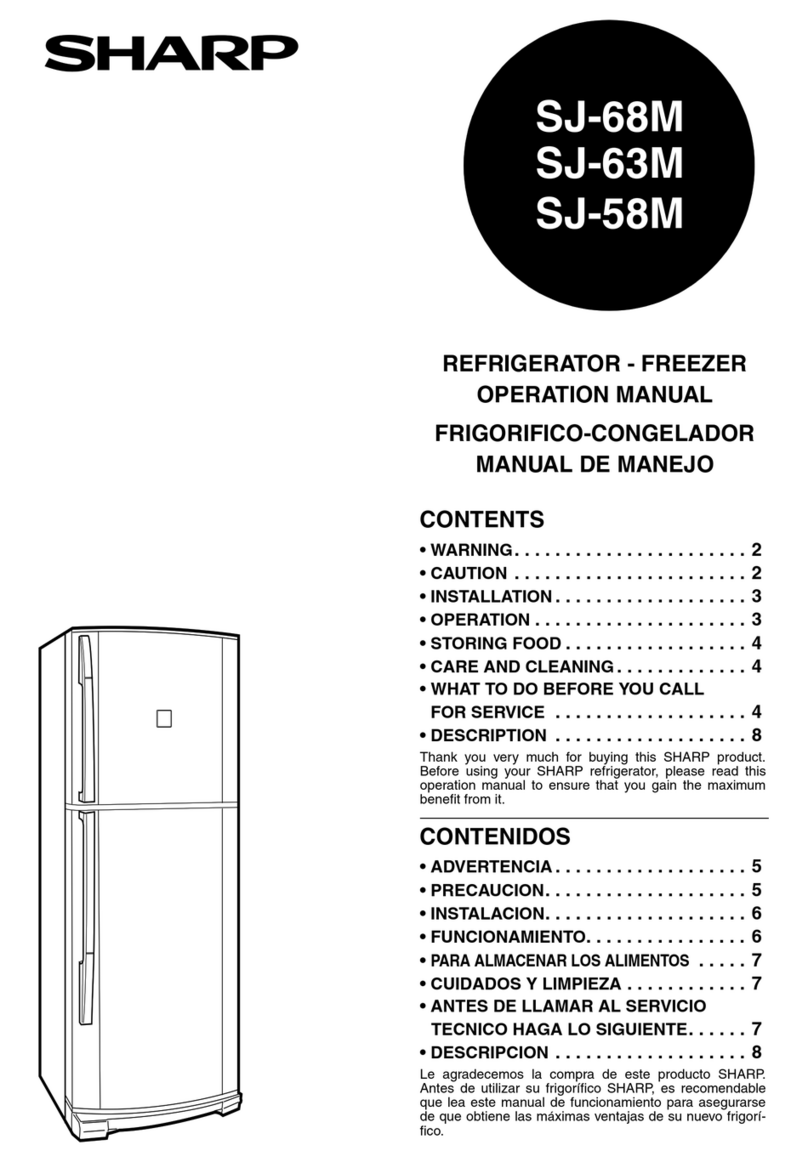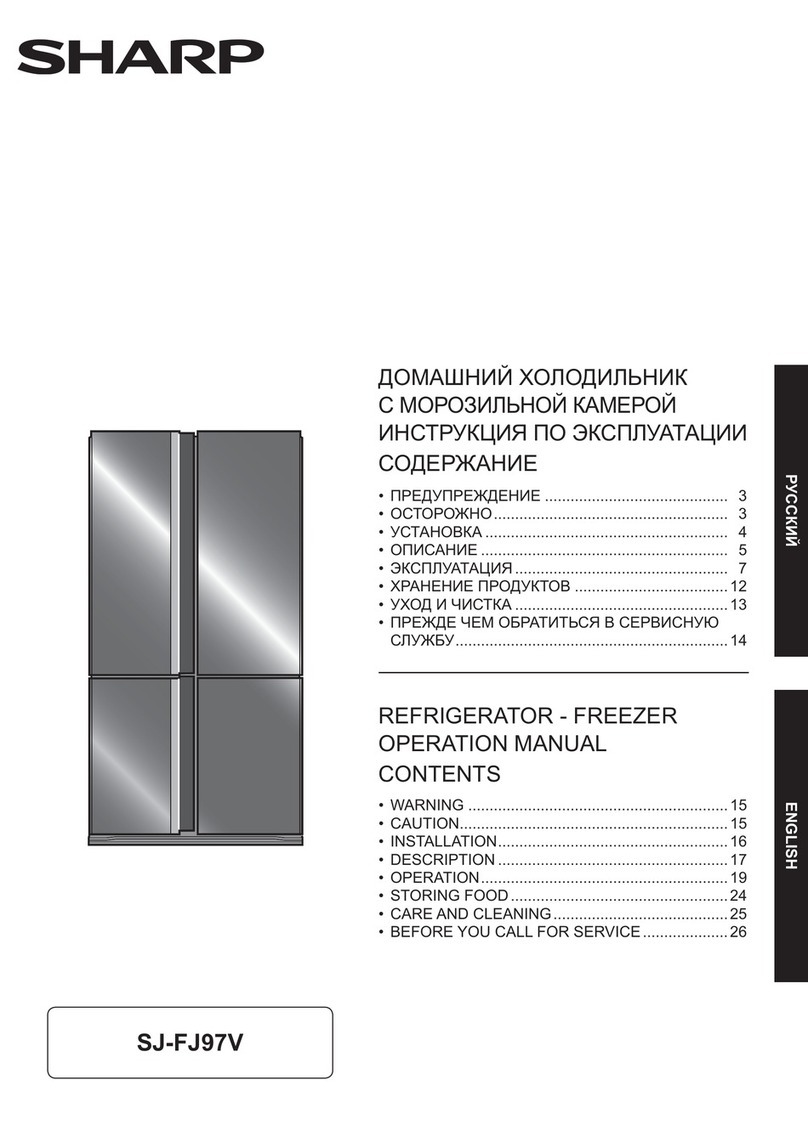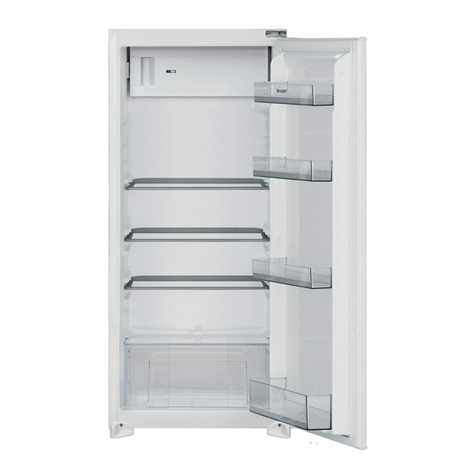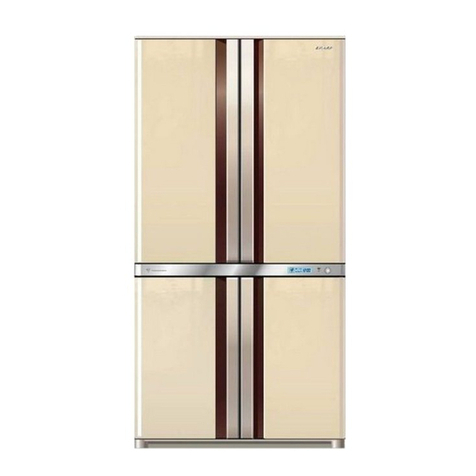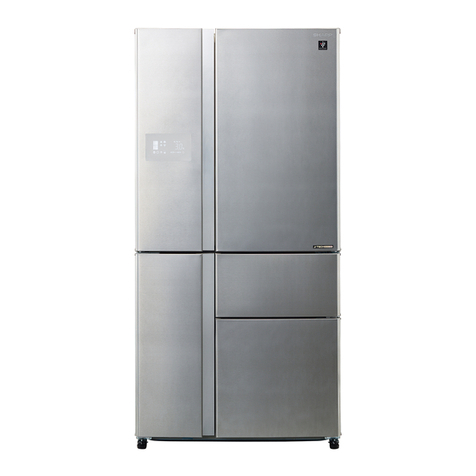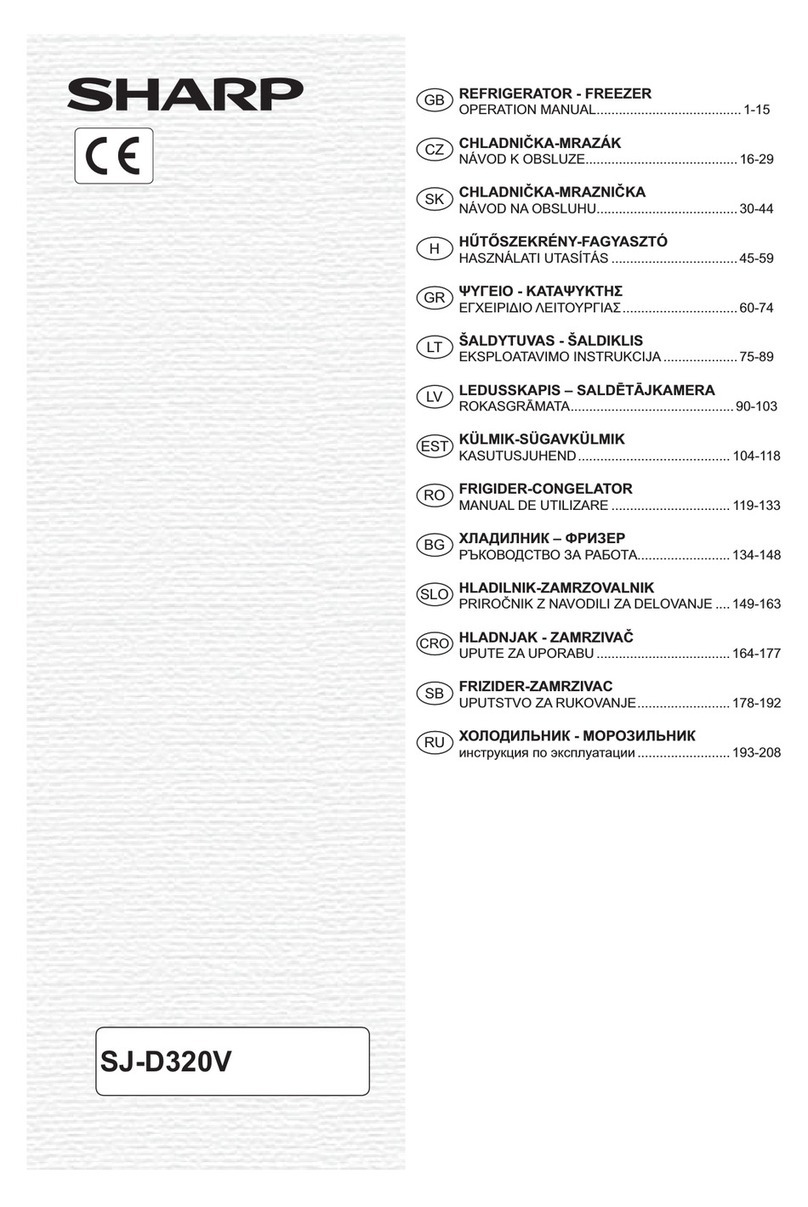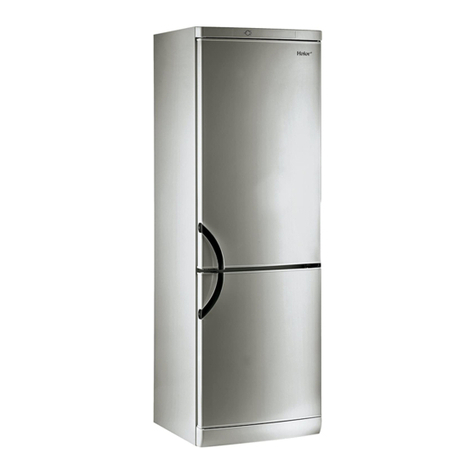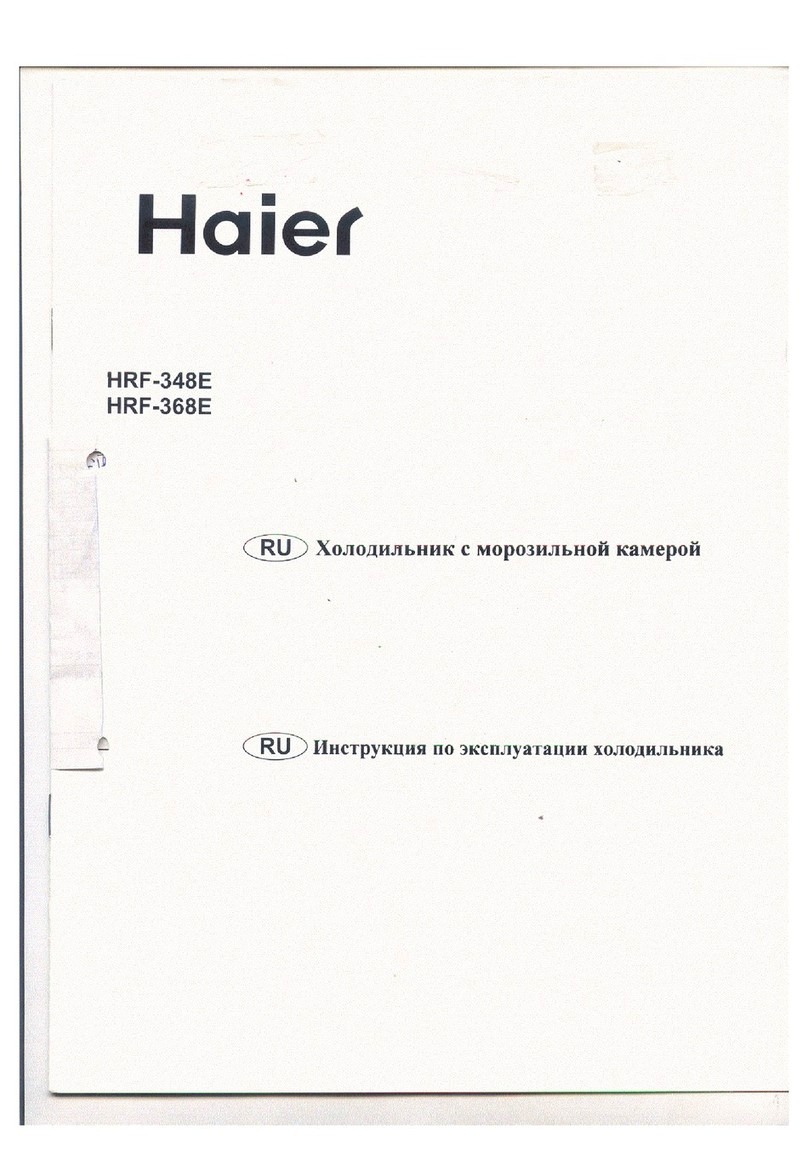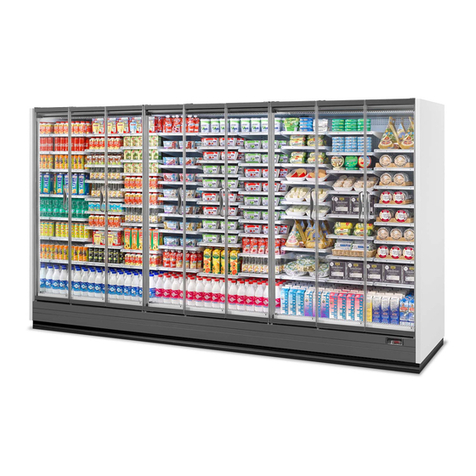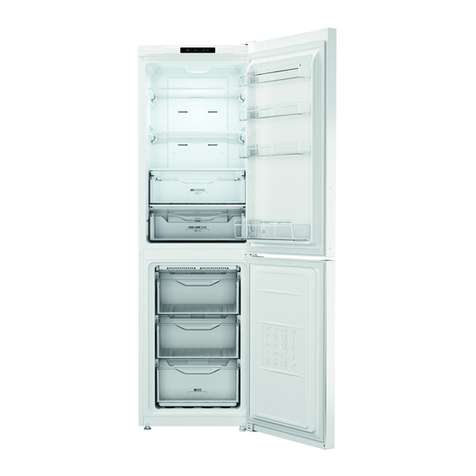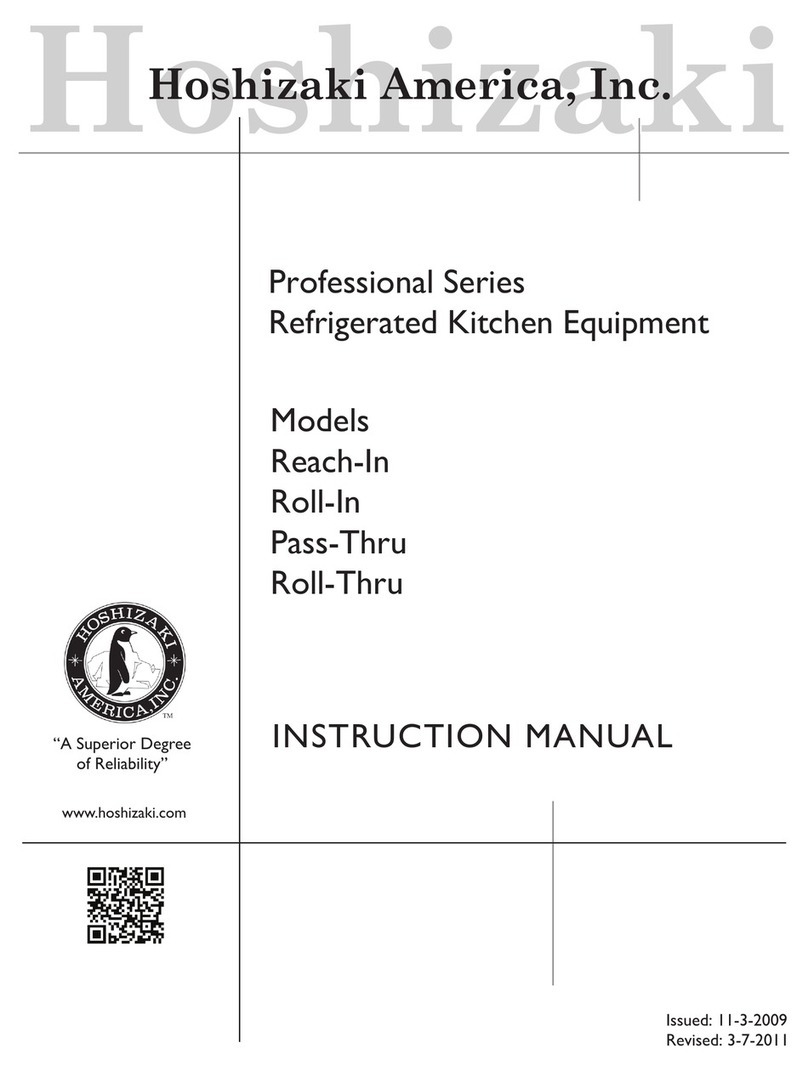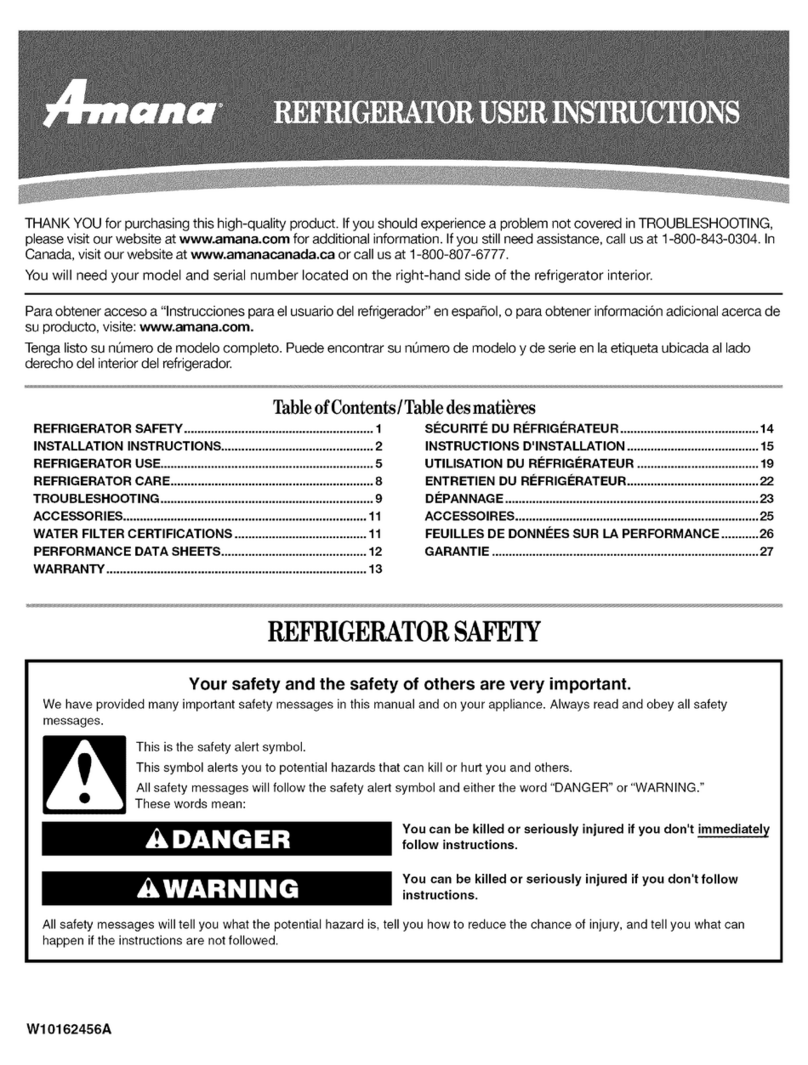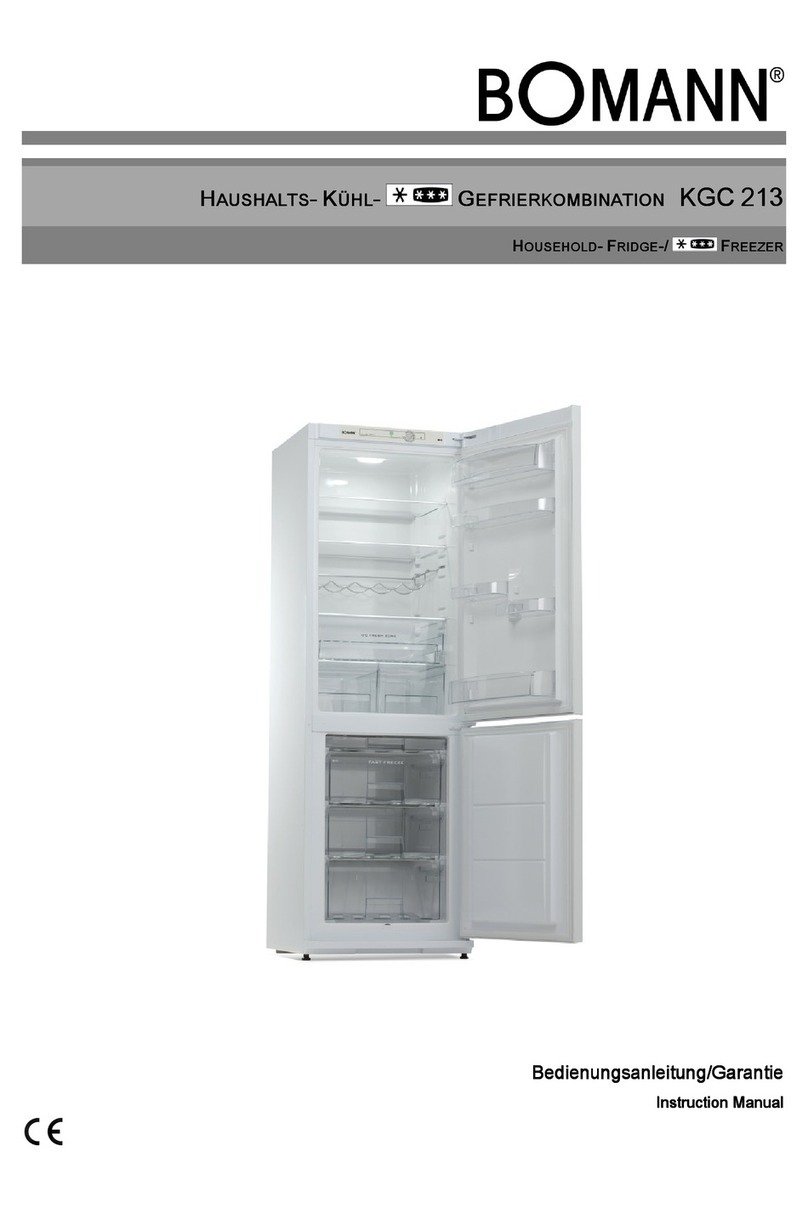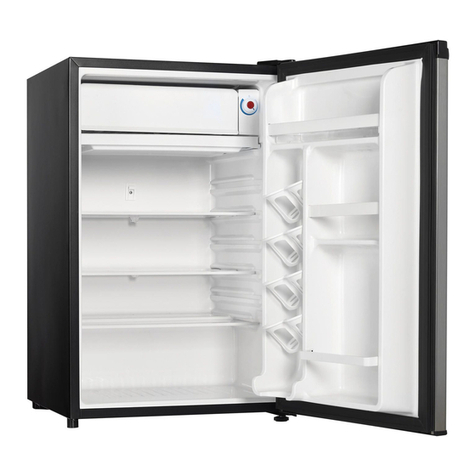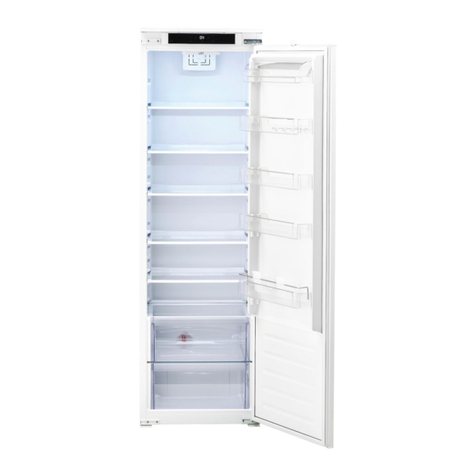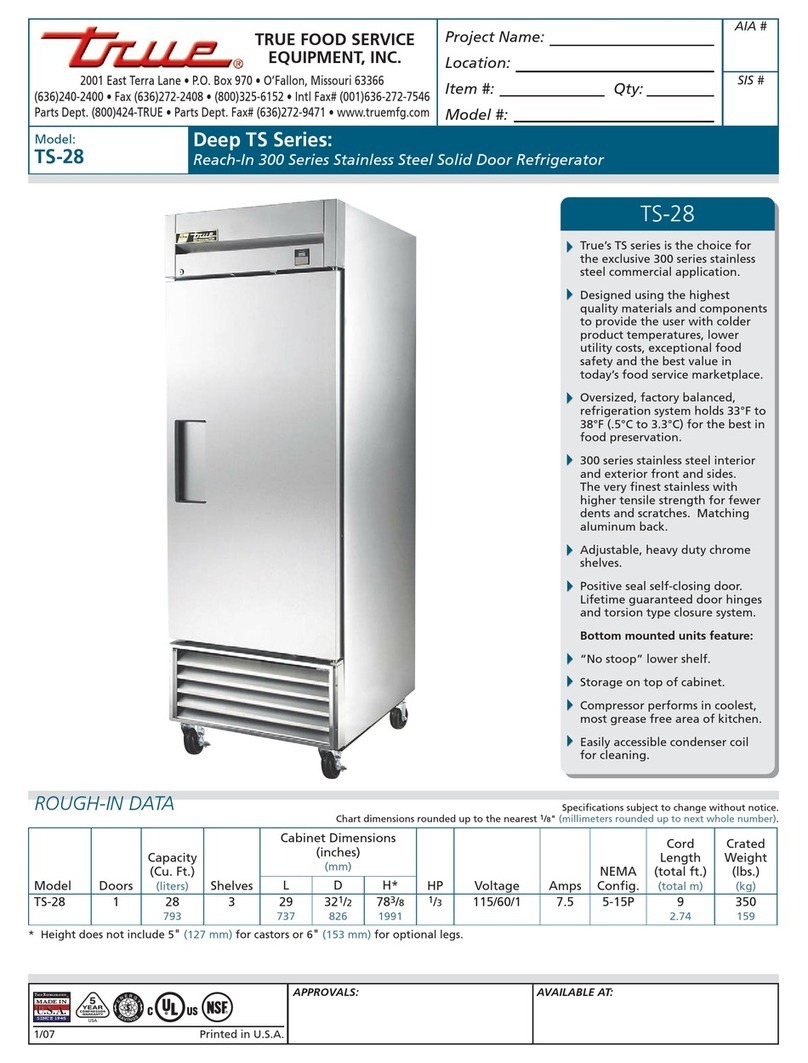CARE AND CLEANING
WARNING
Unplug the refrigerator rst to prevent electric shock.■
Do not splash water directly on the outer cabinet or■the interior. This may lead to rusting and deterioration
of the electrical insulation.
IMPORTANT
To prevent cracking on inside surfaces and plastic
components, follow these tips.
Wipe any food oils adhered to plastic components.•Somehouseholdchemicalsmaycausedamage,souse• onlydilutedwashing-upliquid(soapywater).
If undiluted detergent is used or soapy water is not wiped•offthoroughly,crackingofplasticpartscanresult.
Refrigerator should be cleaned and ventilated at least
once in a year.
1Remove the accessories e.g. shelves from the cabinet
anddoor.Washtheminwarmsoapydishwashingwater;
rinseincleanwateranddry.(Onlyfruitandvegetable
shelf is not removable)
2Clean the inside with a cloth soaked in warm soapy
dishwashingwater.Then,usecoldwatertowipeoff
soapy water.
3Wipe the exterior with a soft cloth each time it is soiled.
4Clean the Magnetic door seal with a toothbrush and
warm soapy dishwashing water.
5Wipe the touch control panel with the dry cloth.
NOTE
Topreventanydamagesonexteriorsurface,packingor• plasticonyourrefrigerator,donotuseheavydutycleansers
orsolvents(lacquer,paint,polishingpowder,benzine,boiled
water,etc.).
Ifthepowersupplyisdisconnected,pleasewaitforatleast5•
minutes before re-connecting power.
Theglassshelvesweighapproximately3kgeach.Holdrmly•
when removing from the cabinet or carrying.
Do not drop objects inside the refrigerator or strike the inner•
wall. This may cause the inner surface to crack.
Defrosting
Defrosting is fully automatic due to a unique energy saving
system.
When the compartment light is blown
ContacttheserviceagentapprovedbySHARPtorequesta
replacement compartment light. The compartment light is not
toberemovedotherthanbyqualiedservicepersonnel.
Switching off your refrigerator
We recommend you to switch your refrigerator off when you
aregoingawayforanextendedperiod.Removeallfood,
clean the interior thoroughly. Remove the power cord plug
from the power socket and leave all doors open.
Bythisway,therefrigeratorwillbeventilatedandincaseof
powercut,youpreventtodamagetherefrigeratorandfood.
STORING FOOD
IN
OUT
Refrigeration reduces the rate of food spoilage.
Tomaximizetheshelflifeofperishablefoodproducts,
ensure that the food is of the freshest possible quality.
The following is a general guide to help promote longer food
storage.
Fruit / Vegetables
Tominimizemoistureloss,fruitandvegetablesshouldbe
looselyenclosedinaplasticmateriale.g.wrap,bags(donot
seal) and place in the fruit and vegetable crisper.
Dairy Products & Eggs
Most dairy products have a use by date on the outer•
packaging which informs the recommended temperature
and shelf life of the product.
Eggs should be stored in the Egg holder.•
Meats / Fish / Poultry
Place on a plate or dish and cover with paper or plastic•
wrap.
Forlargercutsofmeat,sh,orpoultry,placetotherearof•
the shelves.
Ensure all cooked food is wrapped securely or placed in an•
airtight container.
NOTE
Evenly place the food on the•
shelves to allow the cooling air
tocirculateefciently.
Hotfoodsshouldbecooled•
before storing. Storing hot foods
increases the temperature in the
unit and increases the risk of
food spoilage.
Do not block the outlet and•
inlet of the cool air circulating
circuitwithfoodsorcontainers;
otherwise the foods will not be
evenly cooled throughout the
refrigerator.
Keep the door securely closed.•
In order to keep the unpacked•foodfreshlongerwithoutrotting;
contiguity with the air should be
prevented.
Do not place food directly in front of cold air
outlet. This may lead to the food freezing.
For best freezing
Quality of foods should be fresh.•
Freeze small quantities of food at a time to freeze them•
quickly.
Foodshouldbeproperlysealed,sealedtightlyorcovered.•
Evenly place the food in the freezer.•
Label bags or containers to keep an inventory of freezing•
food.
